
Adaptation
The whole of actions and measures aiming at the improvement of a system’s response capacity (resilience), as well as at the reduction of its vulnerability
Back to Keywords
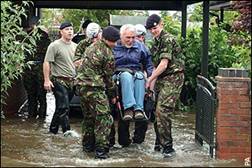
Coping capacity
The means by which people or organizations use available resources and capacities to face adverse consequences related to a disaster
Back to Keywords

Damage assessment
The measurement of the losses and costs suffered by a territorial system due to a disaster. This includes the loss of natural, economic, infrastructural and human resources, the costs of the emergency and rescue and the costs for restoring material and immaterial structures
Back to Keywords

Exposure
Focuses on the socially valued elements of a territorial area that may potentially be damaged by a hazard. Can be defined as the degree to which natural or socio-economic community or territorial systems are exposed to potential hazards
Back to Keywords
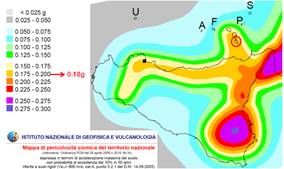
Hazard
A physical event, phenomenon or human activity with the potential to result in harm. Can be either slow, like drought, or rapid, like earthquakes or explosions. Can have effects which can be felt across a range of territorial scales and can have transboundary effects
Back to Keywords

Indicator
Piece of information, knowledge element to be selected, characterized and measured to build knowledge frameworks for vulnerability and resilience assessment. There is the need to relate indicators to specific spatial and temporal contexts before any assessment process can be carried out. It is important to have “valid” indicators, that is the indicators answering the question “to which extent proposed indicators and their relative measures are actually providing a good proxy or synthesis of corresponding features and processes?”
Back to Keywords
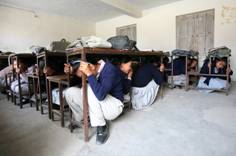
Mitigation
Any structural or non-structural measure undertaken to limit the adverse impact of natural hazards, environmental degradation or technological hazards. This includes all structural and non-structural measures and interventions to prevent or reduce the potential damage impacts and costs
Back to Keywords

Na-techs
Technological disasters triggered by natural disasters e.g. toxic chemicals releases caused by earthquakes. Can have effects which can be felt across a range of territorial scales and can have transboundary effects
Back to Keywords
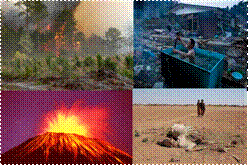
Natural hazards
Natural phenomena which have the potential to cause damage and disruption as earthquakes, storms, floods, droughts, wild fires, landslides, snow avalanches, volcanoes. Different types of natural hazard can interact in the same territorial area. Different forms of natural hazard can be triggered by the same environmental event e.g. landslides and floods can be caused by heavy rainfall
Back to Keywords

Resilience
The capacity of a socio-economic, natural or community system potentially exposed to hazards to adapt, by resisting or changing in order to restore or maintain an acceptable level of functioning and structure
Back to Keywords

Space
Distinction between places that are differently affected during the same event: the so called core of the disaster, its “epicentre”, where physical damage is more prominent, and the “periphery” of the event, which is directly and/or indirectly involved in the disaster. Some vulnerabilities are local, or are particularly relevant locally in shaping the damage (like physical), but others make sense only when larger scales are considered. Some vulnerabilities are evident at larger scale because of the nature of the threat and the intrinsic features of systems. The scale at which vulnerabilities are relevant depends on the institutional, economic and social arrangements in the different contexts
Back to Keywords

Systemic
Various factors, systems and components concur to create vulnerability and resiliency patterns, both individually and through their multiple connections
Back to Keywords
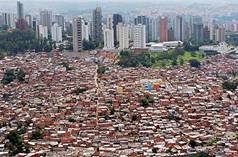
Territorial Analysis
Tools, indicators and criteria to identify and characterize territorial physical, systemic, structural, social, economic, environmental systems and singular elements referring to exposure and vulnerability assessment
Back to Keywords

Territorial scale of analysis
The spatial dimension in the analysis – observation and resolution territorial scale at which vulnerability and resilience assessment can be developed. At the urban-local scale, the analysis includes urban tissues, building aggregates and individual buildings, in-depth analyses of strategic equipments. At the regional-territorial scale, the analysis includes strategic elements such as roads, industries, public equipments
Back to Keywords

Time
Vulnerabilities are shaped over time. Vulnerabilities that we are able to assess today are the result of historic processes, shaping cities, communities, infrastructures in a way that builds their potential relationship with hazards. Different types of vulnerabilities become more apparent and relevant at different stages of the disastrous event: at the impact – physical vulnerabilities transform into the direct physical damage provoked by the event; during emergency and recovery – systemic, social, institutional, organizational factors determine how slowly or how fast return to normalcy will be possible and at what conditions
Back to Keywords

Vulnerability
A multifaceted concept. Can be broadly defined as the degree of fragility of a natural and/or socio-economic community or territorial system towards hazards: from the physical fragility of buildings and infrastructures to systemic vulnerability deriving from the interconnections of complex systems elements and dynamics and to social and economic coping capacity
Back to Keywords
